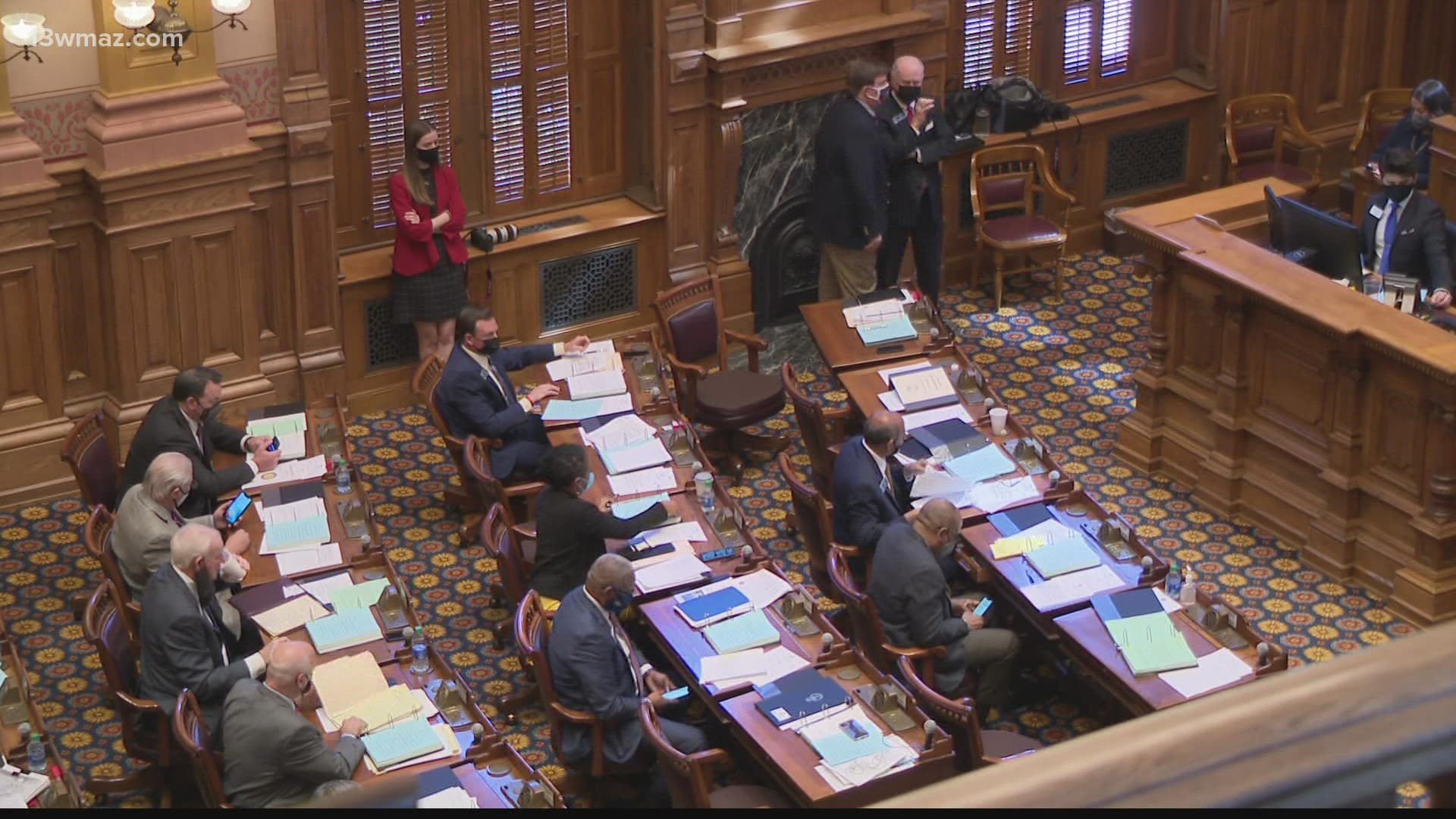MACON, Ga. — Legislators are already busy drawing new lines and reshaping congressional and legislative districts in Georgia.
This week, Governor Brian Kemp called state lawmakers back to the capitol in November to redraw the districts.
Legislators are set to meet beginning November 3, so we're a little more than a month away until legislators meet for the once-in-a-decade redistricting process.
This is bound to be a contentious session given the power struggle between Georgia Republicans and Democrats.
The Republican majority will draw districts that could gain them a seat in the U.S. House and keep control of the General Assembly.
It's important to keep in mind that lawmakers are thinking of how the political landscape could evolve by 2030 when the next census is taken and the next time legislators are mandated to redraw the districts.
So, what is redistricting? Every 10 years, after each U.S. census, legislators need to look at every state and federal election district.
The idea is to make those districts roughly the same size.
Because the U.S. Census results from 2020 are in, it's time for the General Assembly to draw new lines.
"This is true for everything from Congress to the state legislature," said Charles Bullock III, political science professor at the University of Georgia. "If you have someone who represents you by district. Those populations shift over the course of a decade."
Georgia's population grew to 10.7 million in 2020-- gaining about one million people since 2010. The growth was mostly in urban areas meanwhile rural areas shrank.
Because of that, Bullock says one of the biggest shifts will be happening here in Central and South Georgia.
The congressional district that lost the most people is District 2, which Sanford Bishop represents. It covers southwest Georgia stretching from Columbus to parts of Houston County to Macon and then Albany.
"It's underpopulated by about 92,000 people," Bullock said.
Also underpopulated is Congressional District 8, which Austin Scott represents. Bullock says the district lost roughly 45,000 people since 2010.
It stretches from parts of Macon-Bibb and Houston Counties all the way to Valdosta and Thomasville.
"They need to get 130,000 to 140,000 people in these districts. You can't go south because there's a Florida line. You can't go west because there's Alabama, and you can't go east because the 1st and 12th district is not that overpopulated, so that means you're going closer and closer towards Atlanta," Bullock said.
So, what does this mean to you, the voters, who live in these districts?
"For some voters, they may go to vote in 2022, and they may be surprised to find out that the person who has represented them for years and is running again this year they don't live in that district anymore," Bullock said.
We reached out to nearly a dozen state legislators from Central Georgia including Senator John Kennedy the chair of the redistricting committee. None of them responded.

